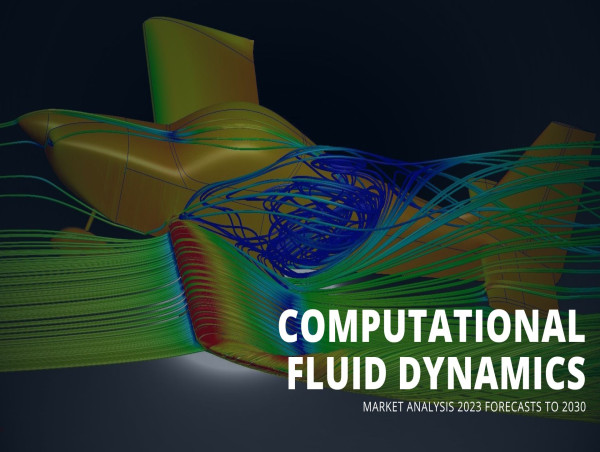Computational fluid dynamics (CFD) is a branch of fluid mechanics that uses numerical methods and algorithms to solve and analyze problems that involve fluid flows. CFD allows engineers to simulate fluid flow, heat transfer, chemical reactions, and related phenomena by solving the mathematical equations that govern these processes using a computer.
Market Dynamics:
The computational fluid dynamics market is expected to witness significant growth over the forecast period owing to increasing adoption of CFD in various engineering applications such as automotive, aerospace and defense, and industrial equipment design. CFD finds application in simulation of complex fluid flows over design components and helps engineers to optimize designs for better efficiency and performance in a cost-effective manner. Also, continuous technological advancements in high-performance computing that allows for sophisticated computational simulations is expected to drive the demand for CFD solutions during the forecast period.
Get Sample Copy of the Report @ https://www.coherentmarketinsights.com/insight/request-sample/654
Major Drivers for Growth of Computational Fluid Dynamics Market
Increasing Need for Energy Efficiency in Manufacturing Industry
With the growing environmental concerns regarding the effective utilization of energy resources, industries are adopting CFD solutions to optimize their design and manufacturing processes. CFD helps analyze fluid flow, heat transfer, and other related phenomena virtually before the actual production. This allows manufacturers to reduce product development cycle time, lower costs, and improve energy efficiency. Several industries such as aerospace, automotive, and energy are majorly investing in CFD to design more energy-efficient products and optimize production processes.
Advancements in High-Performance Computing (HPC) Infrastructure
The increasing ability of HPC infrastructure to support large-scale simulations is a key driver for the growth of computational fluid dynamics market. Earlier, limitations of computing power restricted complex simulations. However, continuous advancements in parallel processing, multi-core processors, and cloud computing have significantly enhanced computational capabilities. This allows performing intricate CFD simulations involving large datasets with higher accuracy in short durations. This factor is encouraging various industries to increasingly adopt CFD solutions.
High Initial Investment Requirement
Setting up an efficient CFD infrastructure demands considerable capital investment in software licenses, hardware, hiring of skilled analysts, and development of simulation environments. Moreover, conducting complex simulations requires powerful servers and HPC systems, which are quite expensive. This high initial setup cost acts as a barrier, especially for small and medium enterprises. While cloud-based CFD solutions have alleviated this to some extent, their advanced pay-as-you-go model still demands large upfront costs for high computation jobs. This factor currently limits the affordability and wider adoption of CFD technologies across industries.
Request for Customization @ https://www.coherentmarketinsights.com/insight/request-customization/654
Increasing Applications in Early Design Stage
Currently, manufacturers are increasingly using CFD simulations in the conceptual design phase to carry out proof-of-concept analysis and explore various design iterations virtually before physical prototyping. This allows reducing physical tests and helps in identifying potential design flaws in early stages, which are less expensive to fix than later in the development cycle. With continued advances in software usability and computing power, the use of CFD is expected to grow further for evaluating concept designs and conducting feasibility studies across industries. This expanding application at the front-end of product development cycle presents significant growth opportunities for computational fluid dynamics market.
Integration with Artificial Intelligence and Machine Learning
A major ongoing trend in the CFD market is the integration of artificial intelligence and machine learning capabilities with simulation tools. This allows processing simulation data at a much faster pace and enables automation of routine tasks. For example, AI-powered CFD tools can now detect unusual flow patterns, optimize geometry automatically to achieve design targets, and provide real-time simulation updates. They are also being used to build surrogate models that expedite simulations. The fusion of AI/ML and CFD is emerging as a disruptive technology that would make simulations more accessible and intuitive for designers. This trend is expected to greatly influence the future scope and adoption of computational fluid dynamics solutions.
The major players operating in the market include:
➱ ANSYS Inc.
➱ CD-Adapco
➱ Mentor Graphics Inc.
➱ Altair
➱ Applied Math Modeling
➱ Ceetron
➱ Dassault Systèmes
➱ ESI
➱ Exa
➱ FloSolve
➱ Simerics
➱ Symscap
These companies are focusing on new product development, partnerships, collaborations, and mergers and acquisitions to increase their market share and maintain their position in the market.
Computational Fluid Dynamics Market Segmentation:
On the basis of deployment model, the global Computational Fluid Dynamics market is classified into:
◘ Cloud-based model
◘ On-premises model
On the basis of end-use industry, the global Computational Fluid Dynamics market is classified into:
◘ Automotive
◘ Aerospace & Defense
◘ Electrical and electronics
◘ Industrial machinery
◘ Energy
◘ Others
Market segment by Region/Country including:
- North America (United States, Canada and Mexico)
- Europe (Germany, UK, France, Italy, Russia and Spain etc.)
- Asia-Pacific (China, Japan, Korea, India, Australia and Southeast Asia etc.)
- South America (Brazil, Argentina and Colombia etc.)
- Middle East & Africa (South Africa, UAE and Saudi Arabia etc.)
Buy Now @ https://www.coherentmarketinsights.com/insight/buy-now/654
Frequently Asked Questions (FAQs):
➱ What are the key factors hampering growth of the Computational Fluid Dynamics market?
➱ What are the major factors driving the global Computational Fluid Dynamics market growth?
➱ Which is the leading component segment in the Computational Fluid Dynamics market?
➱ Which are the major players operating in the Computational Fluid Dynamics market?
➱ Which region will lead the Computational Fluid Dynamics market?
➱ What will be the CAGR of Computational Fluid Dynamics market?
➱ What are the drivers of the Computational Fluid Dynamics market?
Mr. Shah
Coherent Market Insights
+1 2067016702
email us here
Visit us on social media:
Facebook
Twitter
LinkedIn



